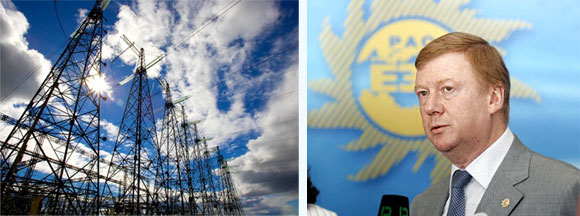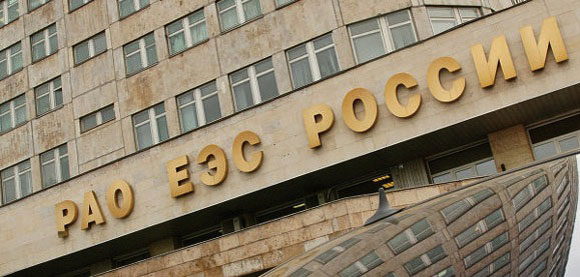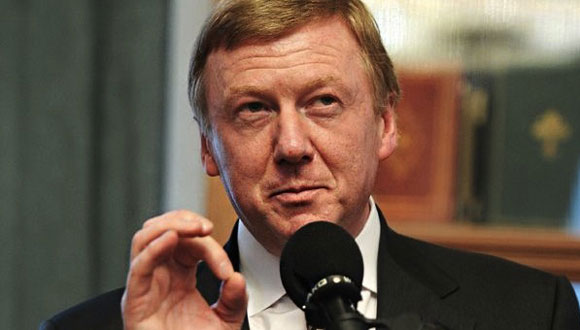During the recent Asian Pacific Ocean Economic (APEC) summit, Russia marketed natural gas pipelines to Asia and the railway route from Asia to Europe. However, one may reasonably doubt the ability of Russian monopolies to execute such ambitious projects. Recent news about Russian Railways reveals a deep crisis within the company, while Gazprom’s high current profits mask the collapse of its long-term strategy. According to IMR economic advisor, Igor Booth, these two Russian giants, in order to reach their full potential, need to adopt best change management practices and, in particular, study the Russian electric power sector’s experience of reform.

Although reform of Russia’s monopolies has been discussed for years, the government does not have a clear plan for its implementation. In the government’s discussion of change, much attention is given to developing economic models and the desired results, but the management of reform remains ignored. Achieving change is left to “strong leaders,” which, in effect, is to act in accordance with Stalin’s famous saying “Human resources are the key to everything.” Even if the Soviet totalitarian management system ceased to exist decades ago, Russian leaders still act as if those methods were still in place.
Nevertheless, Russia can offer an example of successfully breaking up a monopoly: the liquidation of RAO UES, the electrical power utility. Electric power sector reform was the most ambitious structural reform in Russia, with publicly announced goals and results that could be measured. The use of best change management instruments helped to achieve many of the reform’s objectives. At the same time, crucial managerial oversights prevented creation of a fully competitive electric power sector. To analyze this reform we will use the classical model of change management, as described by John P. Kotter, Professor of Leadership at the Harvard Business School.
The Last Reform of the Revolutionary 90’s
At the end of the 90’s, before the reform started, RAO UES was engaged in all kinds of activities, both related and unrelated to its core business. At the same time, the company did not have effective controlover many of its assets. Regional governors and, standing behind them, large industrial electric power consumers made key decisions about the company’s business. Corruption was widespread at all levels of management. Even standard operations, such as purchasing fuel, maintenance, collecting debts from customers and getting credit, demanded extraordinary efforts of the company’s top-management. A number of regional electric power systems were on the edge of technical collapse or engaged in drawn-out corporate wars over ownership of their key assets.
At this time, RAO UES was the only real blue chip company on the Russian stock exchange. With 48% of shares owned by private investors, the company contributed more than half the trading volume on the Russian stock market.

In the 1990’s RAO UES formally owned numerous assets throughout the country, but it did not have real control over them.
In 1998, Anatoly Chubais, one of the key economic reformers in the Boris Yeltsin administration, became the RAO UES CEO. He spearheaded the electric power sector reform, which can be divided into four parts:
• Creating a for profit enterprise on the basis of Soviet era assets;
• Splitting the company into several entities based on their different activities;
• Privatization of the sector; and
• Liberalization of the electricity market, developing a set of rules to trade electric power.
In 1998, the economic reforms in Russia had stalled: there was neither political backing for reforms from the top nor demand for them from the people. In such an inhospitable environment, the electric power sector reform became one of the largest and sophisticated transformations in the history of management. It is also one of the most successful large-scale corporate change projects in Russia: the first two goals of creating a sustainable business and splitting different activities into separate entities were fully accomplished. Technically, the sector was privatized, although the government and state-owned companies, today, still remain the major owners of the electric power assets in Russia. The liberalization of the electric power market-a key stage of the reform-is incomplete and stalled. Managerial mistakes have resulted in delay and failure to fully realize the remaining goals.
Seven Victories on the Road to Change
Building an organization
It is often said that crisis is not the best impetus for change. As Alan Deutschman convincingly demonstrates in his book Change or Die, even the threat of death is not enough to make people change their habits. During a crisis, any system is occupied with preserving-not improving-itself. There is no reason to replace an engine on a sinking ship before the holes are plugged.
In RAO UES, anti-crisis management preceded the reforms. It took several years to regain full operational control over the company’s assets, normalize payment collection from customers, curb corruption at the lower levels of the organization and establish transparent corporate procedures. Only after RAO UES stabilized its operations and financial position was it ready for reform.
Radical changes
When moving towards reform, any bureaucracy prefers making small steps and gradual “evolutionary” changes. However, people and organizations cannot function effectively during long periods of change. According to Bain & Company research, successful corporate reforms are typically finished in two years. Fast, radical and transparent changes are usually the only way to achieve successful corporate reforms.
From the very beginning, RAO UES was on track for radical change. Considering the sector’s complexity, the changes needed more than two years. The initial “3+3” plan was replaced by a “5+5” plan meaning five years for the company’s stabilization and developmentof a reform plan, and five years for reform implementation.
Sweeping changes took place soon after Anatoly Chubais took charge of the electric power sector. In just several months most of the regional division’s managers were dismissed and top management completely replaced. It was the old guard, mainly people with engineering backgrounds, who had sabotaged all previous attempts to transform the company. The team overhaul was done quickly, publicly and in a transparent manner. Chubais announced new work rules and new requirements for managers. Those, who were not able to comply withthe new order were fired ortransferred from executive to operational positions.

Anatoly Chubais, one of ideologists and key economic reformers of the 1990s, was also behind the reform of the Russian electric power sector during the early part of this century.
New opportunities were thus created for young and ambitious managers. Some of thosewho joined RAO UES as interns in the beginning of the reform progressed to key positions in electric power companies or in the bodies regulating the industry.
A complete change in upper management is essential for effective change in a complex system. In the classical American case of Lee Iacocca’s restructuring of Chrysler at the end of 1970s, only two out of 50 top-managers joined the new team. At the beginning of this century, new CEOs were appointed to most state-owned monopolies.In contrast to the changes made at RAO UES, these more recent changes have been gradual, opaque, and basedon personal connections and loyalty, not merit.
Shaping a vision
It is difficult to implement major organizational changes when a company’s various stakeholders do not share a common view of its prospects. In the case of RAO UES, the convergence of the views of the conservative “engineers” who traditionally ran the electric power sector since the Soviet times and the liberal-minded “managers” who came to change the industry was very much needed. A distinguishing feature of the reform plan’s development was that it was openly discussed with the participation of all interested parties, including its opponents. This way of developing thereform plan was a powerful instrument to create a unifying vision of the industry’s future.
The public debates on the reform created discomfort for RAO UES’ top-managersand delayed the reform process by several years. However, the open and inclusive discussion process helped to minimize the risk of mistakes during the implementation and prevented resistance from the important stakeholders at the reform’slater stages. The top management of RAO UES demonstrated itsability to listen, make changes to the initial plans and openly acknowledge its own mistakes.

